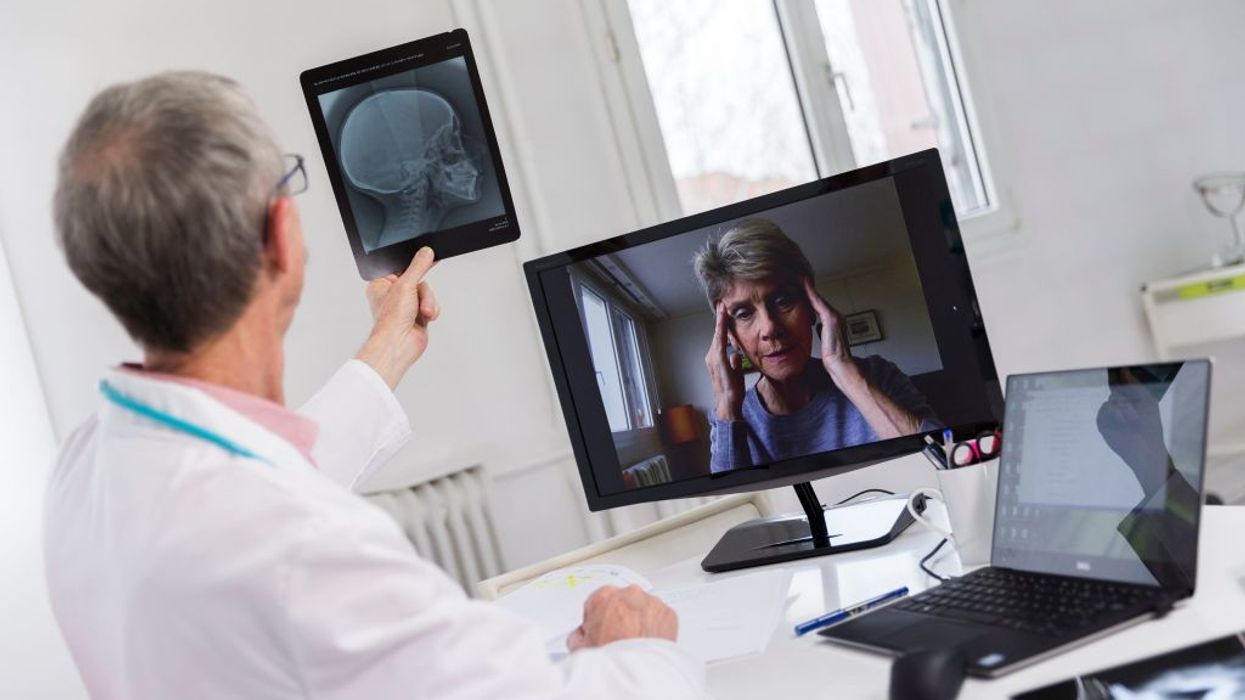Medicare Defenders Slam 'Obscene' Looming Cuts to Telehealth Coverage
"We have trillions to spend on tax breaks for the rich and corporations," said one economic policy expert, "but we can't afford to cover telehealth visits for seniors?"
The announcement Thursday that Medicare will no longer cover many telehealth services starting April 1 prompted elder and telemedicine advocates to urge the Trump administration to continue the provision of vital remote care for millions of Americans.
According to the Medicare website, "you can get telehealth services at any location in the U.S., including your home" until March 31. Beginning April 1, "you must be in an office or medical facility located in a rural area... for most telehealth services. If you aren't in a rural healthcare setting, you can still get certain Medicare telehealth services on or after April 1."
These services include monthly kidney dialysis treatments; diagnosis, evaluation, or treatment of acute stroke symptoms; and mental and behavioral health services, including addiction treatment.
"What is the rationale for this, other than making life more difficult for many seniors?"
The announcement came as the White House signaled Republican U.S. President Donald Trump's openness to slashing Medicare's budget under the guise of the Department of Government Efficiency's (DOGE) mission of reducing "waste, fraud, and abuse."
"Unreal," economic policy expert Michael Linden
said on social media. "We have trillions to spend on tax breaks for the rich and corporations, but we can't afford to cover telehealth visits for seniors?"
One Trump supporter asked on social media: "Why is Medicare eliminating telemedicine? I'm a senior and find it very convenient. If it's fraud, figure out a way to prevent fraud. Have calls made over a government app! I want to know why!"
Congressman Ro Khanna (D-Calif.) asked, "What is the rationale for this, other than making life more difficult for many seniors?"
Campaign for New York Health executive director Melanie D'Arrigo accused Trump of "killing telehealth for seniors, because many seniors will skip seeing a doctor if they have to go in person."
"Patients skipping appointments saves money, but also leads to more preventable deaths," D'Arrigo added. "Guess which he cares about more?"
Dean Baker, senior economist at the Center for Economic and Policy Research, quipped: "Not sure who this is a handout to. I know Trump wants to burn as much fossil fuel as possible, so that is one motivation. Maybe people were getting fewer unnecessary tests with telemedicine, so the medical testing industry could also have been a factor. Any other explanations?"
Georges Benjamin, executive director of the American Public Health Association—an advocacy group for U.S. public health professionals—told Route Fifty's Kaitlyn Levinson Thursday that "the federal contribution is absolutely essential for [telemedicine] to be a seamless system."
However, Benjamin said that "it is unclear what the Trump administration's financial policies will be in terms of supporting telemedicine and incentivizing telemedicine."
Benjamin added that he hopes the Trump administration will "provide supplemental funding and support for states that want to beef up their telemedicine capacity."
The American Telemedicine Association (ATA), another advocacy group, last month praised Trump for temporarily expanding Medicare telehealth coverage during the Covid-19 pandemic.
"Trump can cement his legacy as the president to modernize the American healthcare system by permanently enabling omnichannel care delivery that leverages both in-person and virtual care," ATA senior vice president for public policy Kyle Zebley said in a statement.
"In doing so," Zebley added, "he will expand access to needed care for millions of patients, boost a beleaguered provider population, and create greater efficiencies and operational successes for struggling healthcare organizations."
American Medical Association president Dr. Bruce A. Scott said last month that "congressional action is required to prevent the severe limitations on telehealth that existed before the Covid-19 pandemic from being restored."
"We must make these flexibilities permanent and secure telehealth's future as an essential element of our patient toolbox, and ensure that all Americans—including rural, underserved, and historically marginalized populations—can receive full access to the care they need," Scott added.


